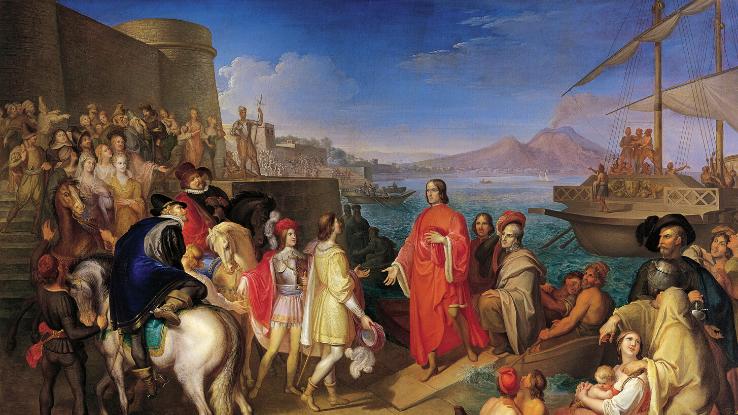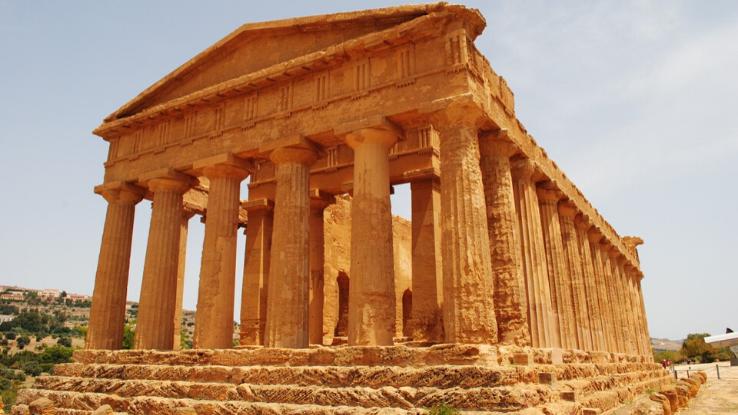What Were the Three Reasons Why the Renaissance Began in Italy?

During the European Renaissance, a cultural and intellectual movement took place. A passion for literature, the arts and knowledge surged, leaving a legacy that can still be seen in the world today. For instance, the works of art and ideas of Leonardo da Vinci continue to be mentioned everywhere, from education to pop culture.
According to historians, the Renaissance originated in Italy and spread across Europe — but why did the Renaissance movement begin in Italy? The Renaissance, which means “rebirth,” originated in Italy for three main reasons: the rise of Italian city-states, the wealthy supporting art and the influence of the ancient world. These factors transformed medieval Italy into a more modern setting.
How Italian City-States Became Dominant and Wealthy
As the country’s leadership collapsed, Italy divided into small states. These city-states became centers for trade and commerce, forming business relationships with major parts of Europe and Asia. New goods and ideas poured into these Italian regions, leading to the dominance and wealth of the city-states.

However, the city-states weren’t allies; they were neighbors in war. For decades, the city-states fought each other for more power and status. Some of the most powerful city-states were Siena, Verona, Florence, Milan and Venice. Siena was initially the capital of banking and commercial activities until Florence eclipsed the city and assumed its status. Money and power helped each city-state invest in projects that propelled the Renaissance.
The High Society Were More Than Interested in Art and Literature
During this period, there was an explosion of art and knowledge. Scholars and artists not only thrived, but they also became famous figures, especially among the rich. In fact, it was common for wealthy families and individuals to welcome and endorse the arts. For instance, the Medici family of Florence supported many projects, whether they were big or small, complex or simple. Lorenzo de’ Medici, also known as Lorenzo the Magnificent, was one of the most important patrons of art.

Many prominent artists, poets, writers, scholars and thinkers emerged during the Renaissance, including Michelangelo, Leonardo da Vinci, Raphael, Dante Alighieri and Petrarch. Some of the most famous artworks of all time were created in this time period too. The Mona Lisa, The Last Supper and the Vitruvian Man are a few great examples. These three masterpieces have one thing in common: The legendary Leonardo da Vinci created them. However, da Vinci was more than just a painter; he was a scientist, a mathematician, a musician and an inventor. In fact, one of his inventions was the flying machine.
With the help of artists and intellectuals, wealthy families were able to flaunt their money and status. However, artists and scholars also benefited from this exchange. They didn’t have to work ordinary jobs to survive. Instead, artists and intellectuals continued to do what they loved, flourishing in their crafts and producing more art and literature to drive the movement of the Renaissance.
The Influence of the Ancient Roman and Greek Empires
Thanks to the financial support of the wealthy, artists and scholars could travel Italy to explore ancient ruins and study texts, which inspired many of their famous works. Their discoveries also led to advancements in science, technology, fine arts, music and architecture that eventually spread throughout Europe.

How did they get their hands on these classical texts? Many academics fled to Italy after the fall of the Byzantine Empire, bringing with them the great works of the ancient Greeks and Romans. The texts made it easier to revive the knowledge that was lost.
There’s also a reason why monuments and architecture in the Renaissance age look familiar. Artists and scholars weren’t only inspired by ancient Rome’s extraordinary wisdom, but also by its building designs. In fact, architect Filippo Brunelleschi featured classical Roman-architecture shapes and sizes in his buildings, such as the dome of the Santa Maria del Fiore cathedral in Florence.





